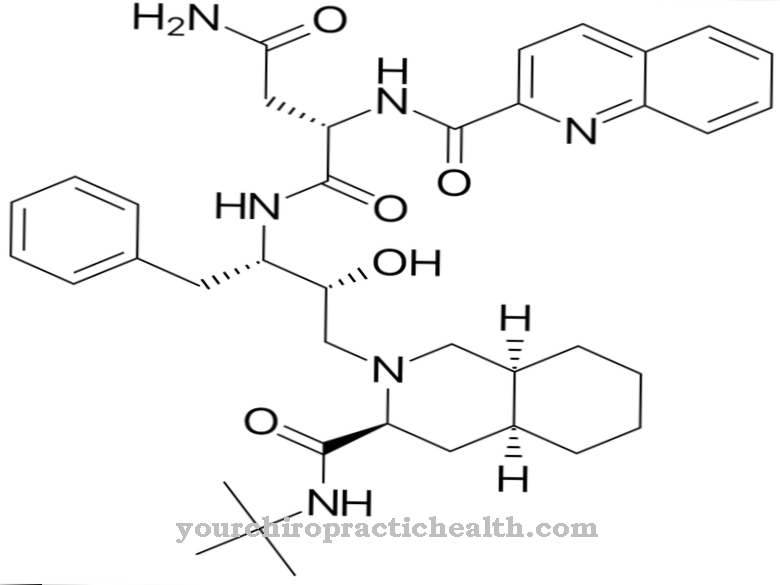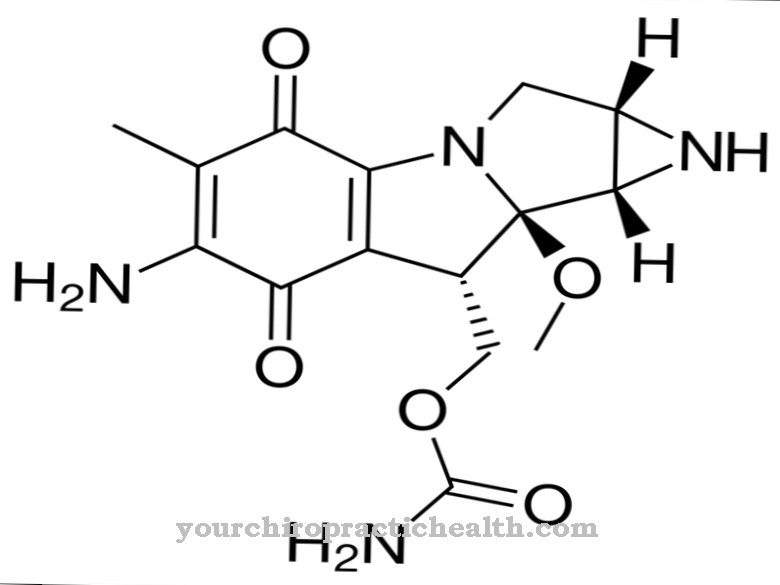Naratriptan belongs to the group of triptans. The drug is effective against migraines and cluster headaches.
What is naratriptan?

Naratriptan is an active ingredient from the triptan group. Several different triptans are offered in Germany. The selective serotonin agonist naratriptan was manufactured in the 1990s by the British pharmaceutical company GlaxoSmithKline. Naratriptan, which came on the market in 1997, was the weakest triptan because the drug should cause fewer side effects than other triptans.
For some time, naratriptan was the only triptan substance in Europe that no longer required a prescription at a correspondingly low dose of 2.5 milligrams per tablet. Naratriptan in the form of the preparation Formigran® has been available in pharmacies since 2006 without a prescription. In 2012, bioequivalent generics also came onto the market.
Naratriptan is used in migraines to treat acute headaches during an attack.
Pharmacological effect
In the case of migraines, the affected persons periodically suffer from typical headache attacks that occur on one side. To this day, there have only been guesses as to what exactly happens in the body during a migraine attack. During an attack, vascular-active messenger substances are supposed to be released within the blood vessels of the brain. The messenger substances ensure that the blood vessels expand and that adjacent nerve fibers are activated. This causes inflammation, which irritates sensitive nerve endings in the blood vessels. In the process, painful signals are sent to important brain switching centers. This is noticeable in the affected persons through severe headaches, nausea and nausea.
Naratriptan is considered a selective agonist on serotonin receptors such as 5-HT1B and 5-HT1D. These receptors are found presynaptically on neurons (nerve cells) and cerebral blood vessels. If a migraine attack occurs, naratriptan has the ability to activate the receptors. In this way, the blood vessels within the brain can be narrowed to their normal size, which in turn reduces the transmission of pain. The messenger substance serotonin is influenced here. Furthermore, fewer inflammatory mediators are released.
Since naratriptan is very well tolerated, it is well suited for the therapy of patients who come into contact with a triptan for the first time. The administration of the agent to young and sensitive patients is also recommended. The onset of the effect and the subsidence of the headache takes about an hour. The maximum effect occurs after about four hours, so naratriptan should be taken as early as possible.
Another benefit of naratriptan is that only 19 percent of patients experience recurring headaches. In addition, the duration of action of the serotonin agonist is longer than that of other triptans.
Medical application & use
The most important indication for naratriptan is migraine-related headache. The active ingredient is suitable for treating migraine attacks with or without aura. An aura is used when the migraine attack is accompanied by visual disturbances, speech disorders or symptoms of paralysis.
Naratriptan is not suitable for the constant treatment of migraines, so its use should be limited to the duration of the attack. In addition, naratriptan may only be used with a confirmed migraine diagnosis. Furthermore, there should be no other brain diseases. Naratriptan is also used to prevent cluster headaches.
Risks & side effects
In general, naratriptan can be classified as well tolerated. Side effects are therefore relatively rare. The most common undesirable effects include malaise, nausea, vomiting, drowsiness, feeling hot, tingling and dizziness. In some cases, palpitations, slow heartbeat, increase in blood pressure, visual disturbances, feelings of pressure, pain, angina pectoris attacks, itching, hives, edema and allergic shock can also occur. In the worst case, a heart attack is even possible.
Some side effects are suspected to be the result of the migraine attack. If naratriptan is taken too long, there is a risk of the symptoms worsening, which can be noticeable in regular headaches.
Taking naratriptan is considered unsuitable if the patient suffers from forms of migraine such as circulation-related basilar migraine, unilateral migraine or paralysis of the eye muscles. Other contraindications are previous heart attacks, heart diseases due to reduced blood flow, circulatory disorders of the limbs, strokes, kidney dysfunction, liver dysfunction and hypersensitivity to the active ingredient. In addition, the patients should not be older than 65 years.
There are hardly any reliable findings for use during pregnancy. In principle, the migraine drug may only be used in pregnant women with the consent of the doctor. As it is also not known whether naratriptan can pass into breast milk, it is recommended that the child be breast-fed 24 hours after the drug has been administered.
Naratriptan should not be given at the same time as ergot alkaloids. So there is a risk of cramps in the coronary arteries. Furthermore, a simultaneous intake of naratriptan and selective serotonin reuptake inhibitors may only take place under the strict supervision of a doctor. Otherwise the dangerous serotonin syndrome can threaten.



























